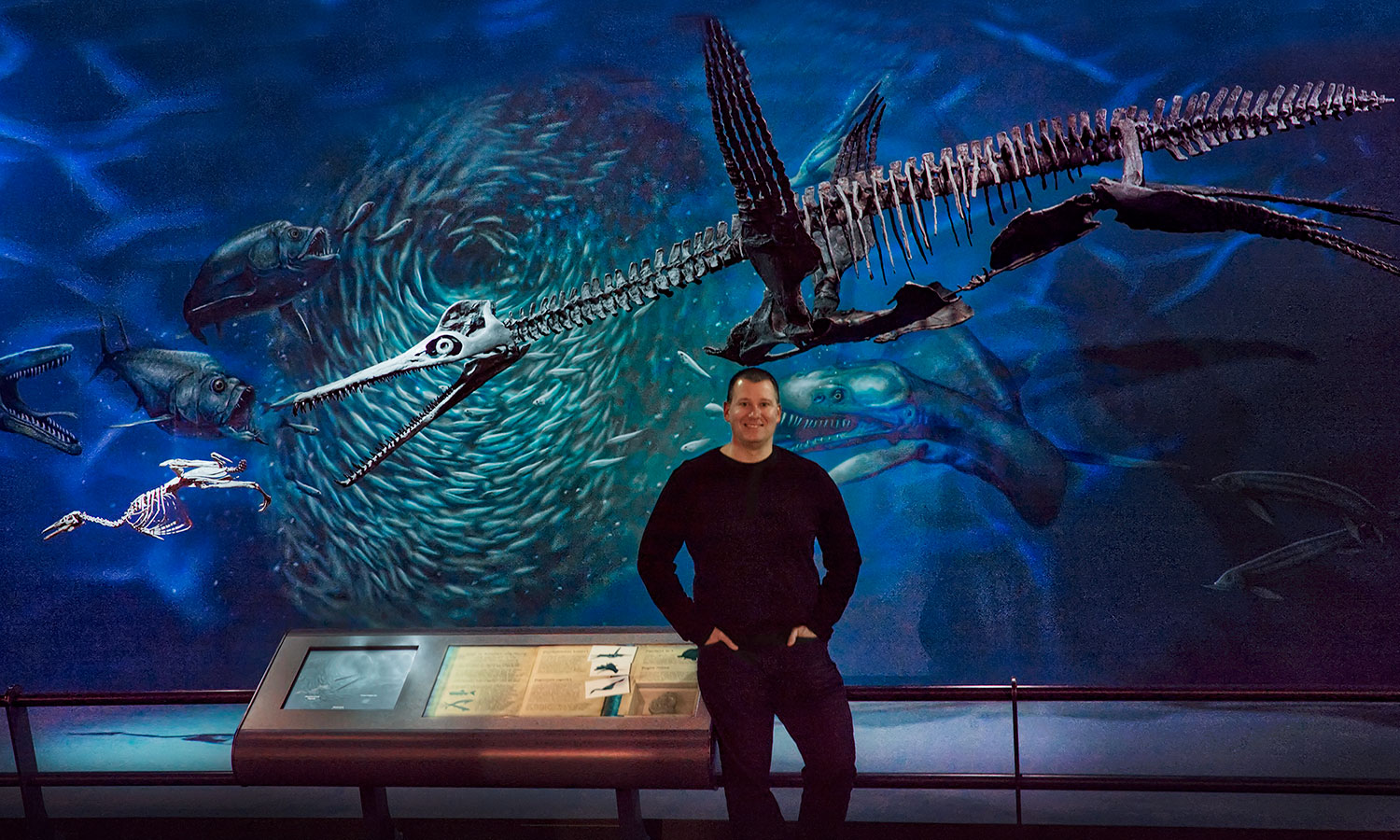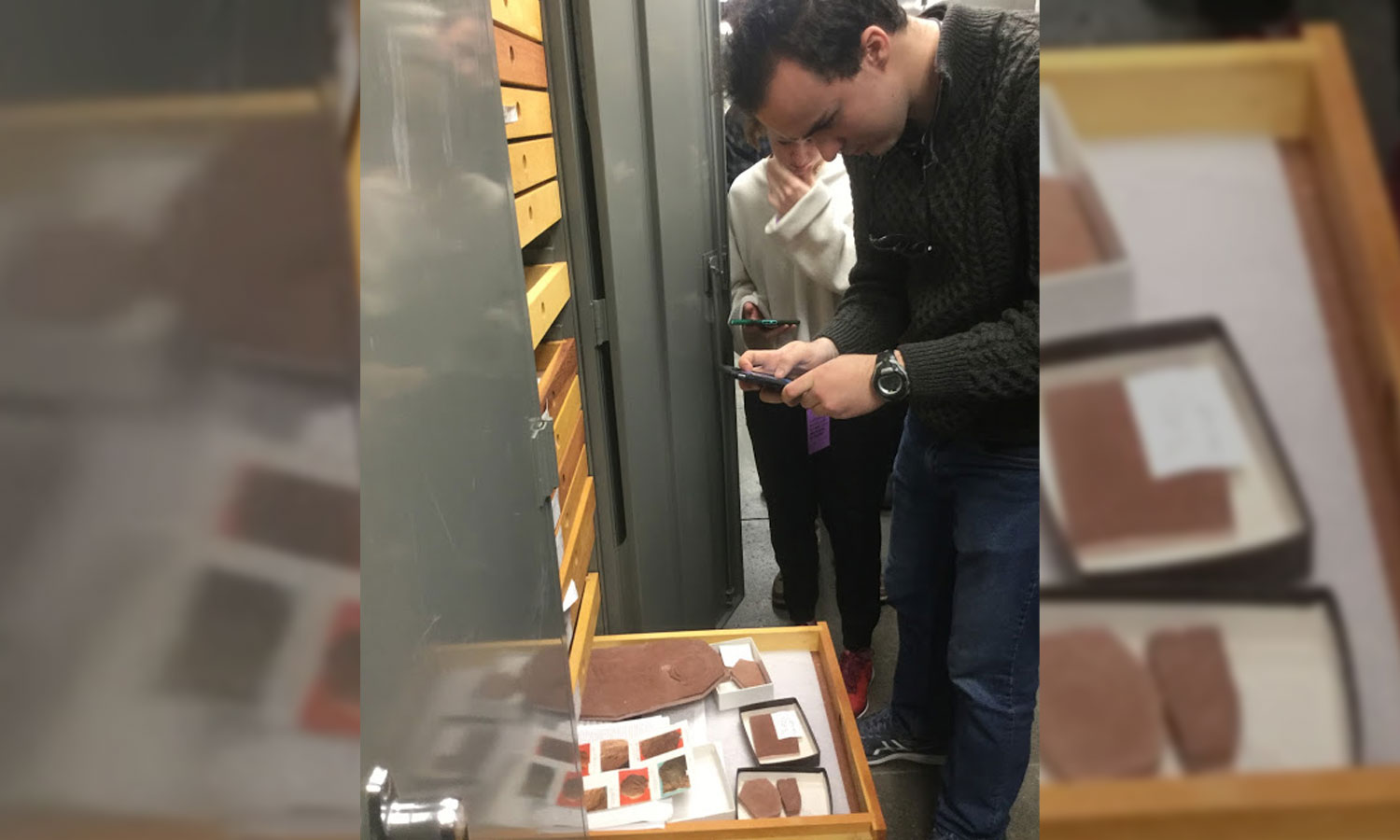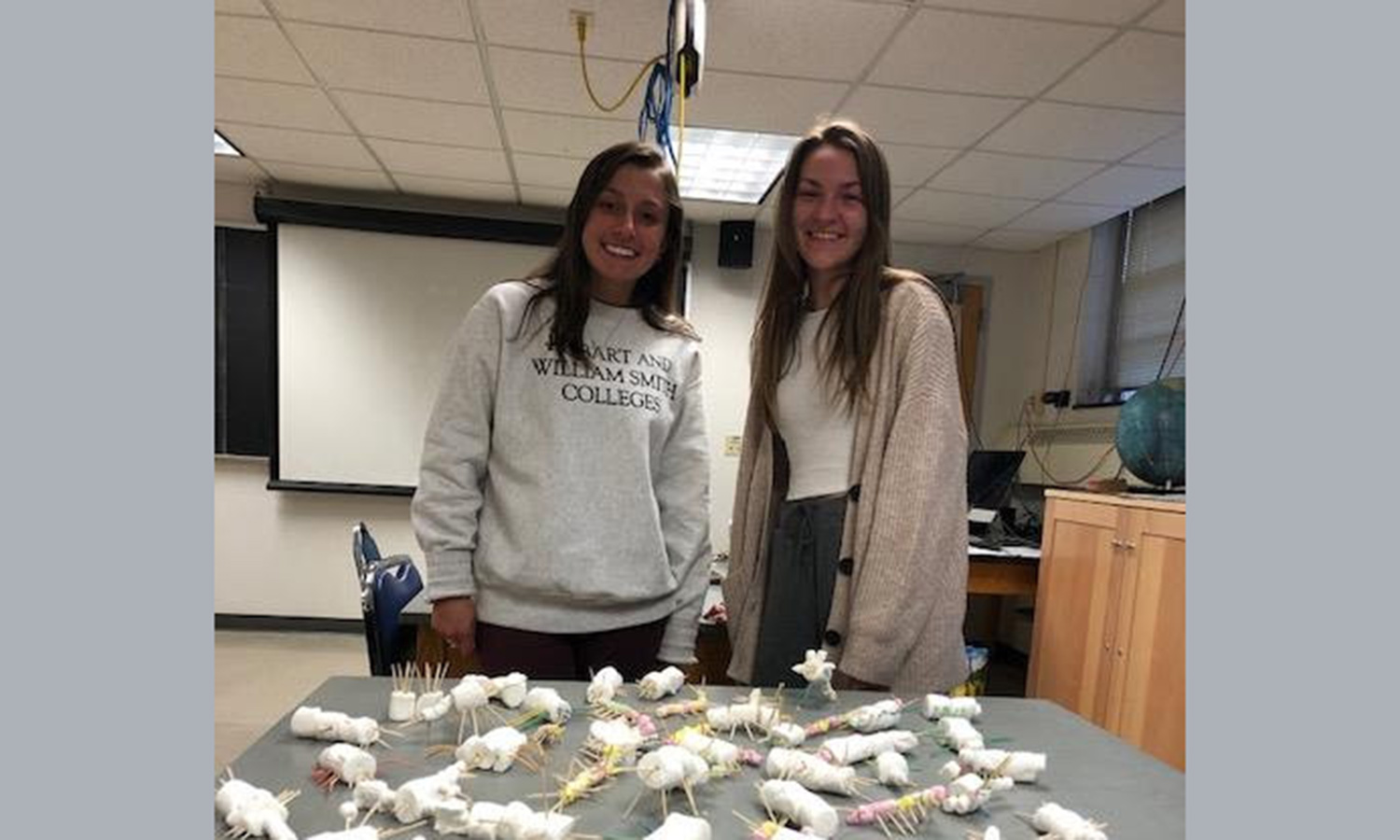
HWS News
27 May 2020 • STEM Paleontology Class Visits Carnegie Museum of Natural History
In Paleontology taught by Associate Professor of Geoscience David Kendrick, students research the mysterious lives of prehistoric plants and animals. A class trip to the Carnegie Museum of Natural History in Pittsburgh, Pa., allowed them to question renowned Paleontologist Matthew Lamanna '97 who serves as associate curator of vertebrate paleontology there. Students had the opportunity to ask about Lamanna's experience leading paleontological expeditions on every continent, as well as his responsibilities preserving, collecting and investigating prehistoric life.
During the tour, Lamanna discussed his work with the fossil preparations staff, and their efforts to understand the larger story each fossil reveals about life on Earth. He also showed students the pieces he is currently examining, including the snout of a giant dinosaur called a Spinosaurus and a new bird fossil.
"Matt talked to us about the kinds of choices the museum staff had to make to develop their spectacular exhibits. He also took us into the fossil storage facility to show us a piece of a Tyrannosaurus rex jaw, including some damage almost surely done by an attack by another T rex," Kendrick says.
PALEONTOLOGY CLASS VISITS CARNEGIE MUSEUM OF NATURAL HISTORY
"Matt Lamanna had so much knowledge about every fossil he showed us. Its really showed how much he cares about his profession," adds Spencer Tretter '21.
The tour also stopped at the invertebrate paleontology collection, where Kate Clayton '23 was able to hold a large trilobite an extinct marine arthropod common in the Paleozoic times and students examined the rib of an extinct Mastodon and the tooth of a Tyrannosaurus rex. Lamanna also joined the class for lunch to discuss their interests.
As part of Kendrick's Paleontology course, students are assigned a specimen and learn what it is, how it grew, the environment it represents and more. Before spring break, Alison Shaw '22 and Alyssa Sands '22 led an in-class activity designed to teach their peers about the basics of bivalve (clams, oysters, scallops, mussels, etc.) anatomy. Using playdough, students created models of bivalves, which allowed them to closely examine, compare and contrast their properties.
Sadie Mapstone '21 and Hannah Koppmann '23 also conducted a modeling activity to teach the class about arthropods.
Tretter researched the Solnhofen Limestone, a Jurassic period limestone discovered in Germany that contains an assemblage of exceptionally preserved fossils. Several are held at the Benedum Hall of Geology at the Carnegie Museum. "When you get to see fossils that are described in your textbook, in person, it makes the course material that much more interesting," Tretter says.
Lamanna was a double major in biology and geoscience at the Colleges. After receiving his Ph.D. from the University of Pennsylvania, he participated and led paleontological expeditions that resulted in the discovery of previously unknown dinosaur species including the Anzu wyliei and the Gansus yumensis.
The above photograph was taken by Spencer Tretter '21. Photographs in the gallery were taken by Associate Professor of Geoscience David Kendrick and Chief Photographer Kevin Colton.











